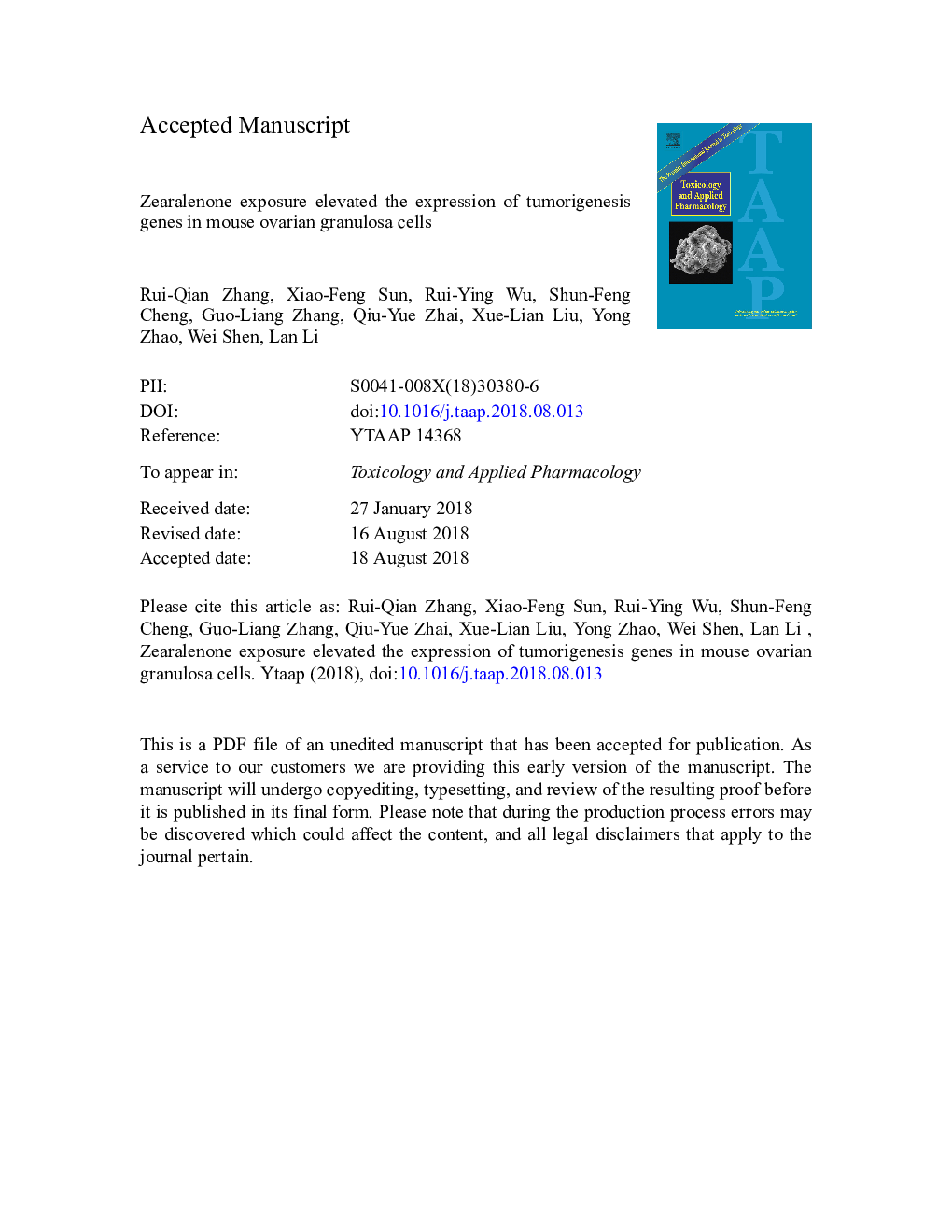| Article ID | Journal | Published Year | Pages | File Type |
|---|---|---|---|---|
| 9954979 | Toxicology and Applied Pharmacology | 2018 | 40 Pages |
Abstract
Zearalenone (ZEA) is one of mycotoxins which are from corn, sorghum and wheat. As an estrogenic compound, ZEA mainly affects animal growth and reproduction with causing abnormal reproduction capability. Previous studies have shown that ZEA poses adverse effects on follicular development, but the mechanism of genetic toxicity of ZEA is not understood. The purpose of this study was to explore the effects of ZEA exposure on granulosa cells which play vital roles during follicular development. Mouse granulosa cells were exposed to 10â¯Î¼M or 30â¯Î¼M ZEA for 72â¯h in vitro, and the differences in gene expression patterns between control and ZEA exposures were analyzed by RNA-seq. The data demonstrated that 30â¯Î¼M ZEA had a significant effect on the gene expression, especially ZEA exposure increased the expression of many genes related to different kinds of cancers and cancer related pathways like Hippo signaling pathway and the related genes, such as Ccnd1, Smad3, Tead3, Yap1 and Wwtr1. Furthermore, immunohistochemistry confirmed the increase in the protein levels of YAP1, WWTR1 and CCND1 in 30â¯Î¼M ZEA exposure group. Collectively, this investigation indicated that ZEA exposure promoted the expression of tumorigenesis genes in mouse granulosa cells to.
Related Topics
Life Sciences
Environmental Science
Health, Toxicology and Mutagenesis
Authors
Rui-Qian Zhang, Xiao-Feng Sun, Rui-Ying Wu, Shun-Feng Cheng, Guo-Liang Zhang, Qiu-Yue Zhai, Xue-Lian Liu, Yong Zhao, Wei Shen, Lan Li,
